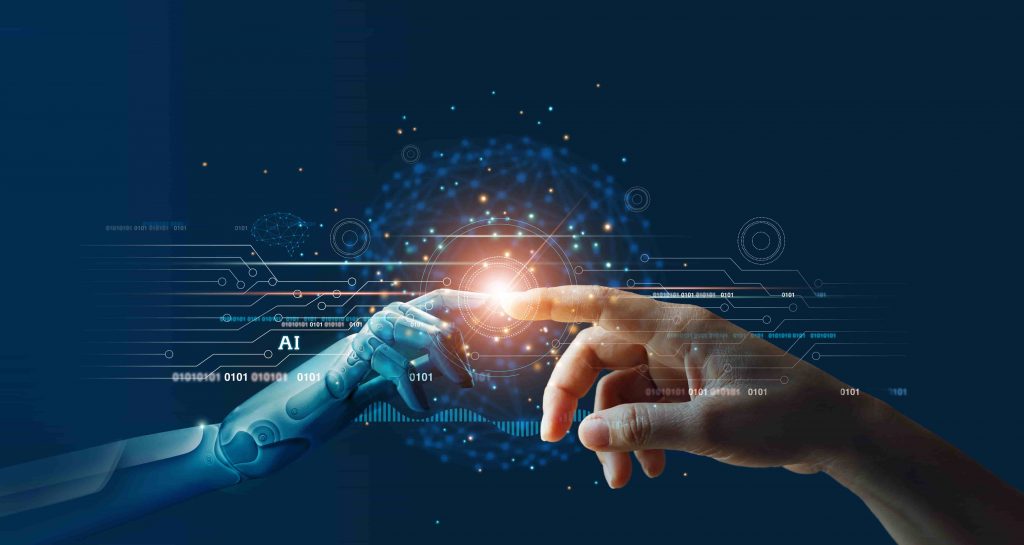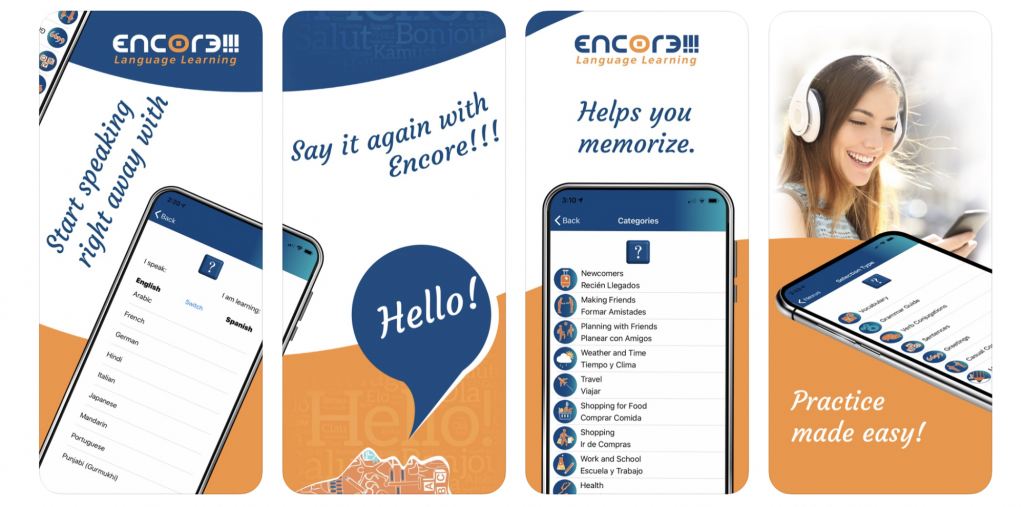How Will Emerging AI Technologies Affect Language Learning
Often, as technology evolves the ways we communicate does as well. In the last 50 years especially, the ways we communicate have changed drastically multiple times. These changes to how we communicate have also changed how we learn languages. Emerging AI technologies may lead the next wave of changes in communication and language learning, so let’s take a look at these technologies and the changes they may bring.

The Relationship Between Technology and Language Learning
Before we look forward, let’s take a quick look back to where we are and how we got there. Language learning used to be something done almost entirely in a classroom or with a private tutor. In earlier times, that meant that learning new languages was often a luxury reserved for the wealthy classes. Some learned languages while traveling or involved in the military, but outside of Latin most language learning was only seen as a high-minded scholarly pursuit.
Language books were once the most common form of studying language at home, as they have existed in some form for a few centuries. However, the US Army developed the audio-lingual method of learning in response to the communication needs created by World War 2. This method soon found its way into people’s homes as home recordings became possible and language learning records and later tapes became a popular way to learn language. Many of these recordings were often accompanied by books to help give a fuller form of language education.
The home computer revolution brought yet another major shift in language learning. Programs that combined the methods of the recordings of the past were joined with an interactive element that was a natural growth from the books of the past. Soon, the methods were changed as well as the technology allowed for the development of more immersive style language programs. The choice to learn at home had finally become a fully formed way to learn a language.
Smartphones have brought yet another major change, as language learning was no longer tied to a desktop or laptop. Now, people can learn a language where they want and when they want. Apps have become one of the most popular language learning choices, either on their own or as a way to augment classroom learning. The variety of learning styles presented by apps have become wider as well, with gamified apps that offer short and quick lessons along with more in depth language learning apps such as Encore!!!
Now, AI is starting to make waves in many spaces including language learning. Let’s look at how the current technologies can benefit language learners, and maybe make some predictions towards the future.
Language Learning And Artificial Intelligence
Artificial Intelligence is a phrase that is currently on everyone’s lips. One of the biggest drivers of this interest is the emergence of ChatGPT into the public consciousness. We have recently taken a look at ChatGPT and how AI chatbots can be used in combination with Encore!!!, as well as looking at the ups and downs of the chatbot.
To break it down for this article though, the company OpenAI developed an artificial intelligence chatbot known as ChatGPT. This is an AI chatbot that is trained by humans both through supervised learning and transfer learning. Transfer learning means that the chatbot is taught to use solutions from one problem to try to solve others. User data is also used to fine tune ChatGPT’s training.

ChatGPT is just one of the artificial intelligence technologies that are being developed. Other companies are developing technologies that are similar to ChatGPT, and others are working on ideas that are completely different. These technologies have the capability to change our understanding of language learning, so let’s look at the possibilities.
Learning From ChatGPT
One of the things we are learning from ChatGPT is being able to see how learning happens. Researchers have found similarities in how ChatGPT learns and how children learn, especially when it comes to language. This is causing scientists to re-examine long held beliefs about how we learn language. The key finding is that learning grammar is on the whole less important to learning a language than actual linguistic experience.
The more this tool is used, the more we can learn about how the model learns and how it compares to human learning. This can help us to develop new models of language learning that will be even more effective. Meanwhile, it makes for a great accompaniment to apps such as Encore!!!
Beyond GPT-3
ChatGPT is based on a language processing model known as GPT-3 and is a massive upgrade from its predecessor model known as GPT-2. In our other article we have examined the downsides of ChatGPT under its current model. But, this technology is designed to learn from its mistakes. The problems being uncovered in the current model will be fine tuned for the next model, and an inevitable GPT-4 can be expected to be a huge upgrade that might make for a more consistently reliable model.

However, GPT is not the only model being developed currently. Meta is developing a model known as LLaMa. Google is developing Bard. Companies across the spectrum of the tech world are developing models of their own. These competing models will all learn from each other’s mistakes, and one of these models might become the ideal choice for use in language learning.
One example for future modeling developments is that Duolingo is now using an AI model known as Birdbrain, which is designed to help personalize users’ language learning experience. This type of modeling has great potential for a use in language learning, as it helps to supplement the learning experience in the way that a teacher or tutor might be.
The Future Of AI Translation
AI translation has come a long way in a short period. Many of the tools used to be unreliable and created translations that were not accurate. Now, the translations are becoming more and more accurate and even your iPhone has the technology built in to do both audio and visual translation on the fly.
The future of this technology could be increasingly bright. With advancements in technology coming such as Augmented Reality glasses, we could soon be living in a world where signs are translated for us in real time and spoken words are translated directly into our ears.
While some might look at this as a reason why they might not need to learn a language, others will see the potential for language learning. The ability to have real time feedback on your language learning, or to choose to immerse yourself in the language you are trying to learn by translating the world around you into that language. The possibilities are huge.
Conclusion
Language learning is heavily affected by developments in technology, and new developments in Artificial Intelligence have the potential to create massive beneficial changes. Of course, right now it is not something that can be relied upon on its own, but in the future the technology will only get better. All of the current models and ones on the horizon will benefit being used in combination with an app like Encore!!!

Encore!!! is one of the most flexible language learning apps due to its My Entries feature. This feature makes it unique, and you can use these AI technologies to help create personalized lesson plans or to create text you want to use for lessons. Give Encore!!! a try to see how you can combine these technologies for yourself!
How to Use Contents in this folder
